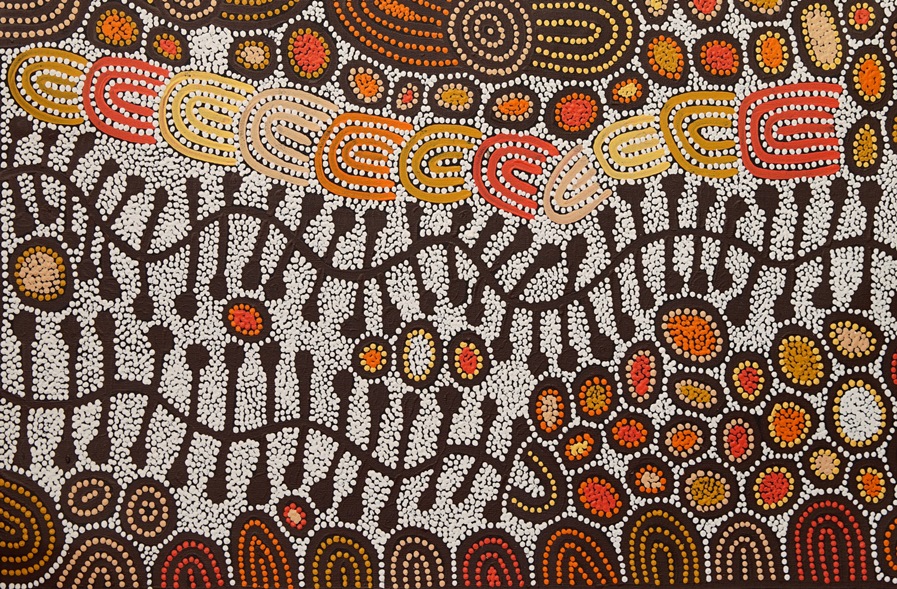
Aboriginal artists don�t simply play with the formal elements of colour, space and composition. A b or ig io na l a rt.

Aboriginal dot paintings and their origin.
Aboriginal artworks and their meanings. These symbols were used as a means of communication; It has substantially knocked down barriers of prejudice and misunderstanding on the part of westerners. Aboriginal art has brought about a revival of their culture in many ways.
A terrifying pantheon of monstrous beings is one subject of visual artworks and traditional aboriginal “dreaming” narratives that merits inclusion in. Many people comment that the paintings look alive and that they literally seem to jump out at you. A b or ig io na l a rt.
Aboriginal symbols are an essential part of a long artistic tradition in australian aboriginal art and remain the visual form to retain and record significant information. Many artists use excess dots to hide meanings and symbols in their paintings. Early aboriginal artists painted their traditional designs while chanting.
However, many symbols have secret and sacred meanings and should only be viewed by initiated individuals. Aboriginal dot paintings and their origin. Traditional works of aboriginal art are imbued with meaning.
Most of symbols that you see in aboriginal artworks are commonplace and considered acceptable for public display. Our admiration of indigenous art and our readiness to pay for it has helped aboriginal people financially and most importantly given them a place of respect, standing and greater confidence. Aboriginal art consists of symbols.
Macdonnell ranges, showing two caterpillars in the landscape. The dot technique gives the painting an almost 3d effect and a sense of movement and rhythm. In men�s ceremonies the emu feathers are used for body decoration.
They are often depicted surrounded by a specific site or waterhole which goes to show that they were considered as an important location by clan members and viable spots to settle with family members. Kathleen buzzacott’s art regularly depicts families hunting for bush food in symbolic form and is a wonderful example of an aboriginal symbol for family. Aboriginal artists don�t simply play with the formal elements of colour, space and composition.
Aboriginal people used symbols to indicate a sacred site, the location of a waterhole and the means to get there, a place where animals. You have heard the saying “a picture tells a thousand words”. 3) the stories behind the aboriginal art works are connected to individuals through family lineages, as groups become custodians for particular parts of cultural events.
Whats the significance of aboriginal symbols. Long and elongated lines are used to represent the symbol of sandhills in many aboriginal paintings. Communication of their lives on earth, their rituals, food, customs and also to show constellations and for ritual.
These ancient symbols can be seen in their rock paintings, cave paintings, body paint, ceremonial clothing, and sand painting. It is also home to mimih figures which are like elegant stick figures. Aboriginal people believe the land owns them, so.
Evidence of australian aboriginal art can be found since 30,000 years ago! This particular symbol to the aboriginal people has a multi meaning, as the heading states it can highlight a sand hill, cloud or some kind of wind break or shelter. Aboriginal paintings are all associated, however loosely, to a tale and the symbols within that painting tell that story.
Who knows maybe if you have enough pictures you don’t need any written words at all. Aboriginal symbols and their meanings. Aboriginal art is the oldest unbroken tradition in the world and is iconic for its use of colours to tell stories and communicate visually.
Aboriginal dot painting techniques were devised as a method of hiding secret knowledge from the uninitiated public. A very important aspect of this art is the use of symbols. This icon has great significance to the indigenous artwork for the people of central australia.
Aboriginal artworks painted in acrylic are a beautiful blend of traditional and contemporary. They are also used to depict various stories and are still used today in contemporary aboriginal art. Aboriginal symbols and their meanings.
They were singing the travels of the alcheringa spirit and sacred place that bought them into existence. Various symbols are used by aboriginal people in their art to preserve their culture and tradition. As aboriginal culture does not have a written language, drawings and paintings are crucial to passing along knowledge and history through generations.
Aboriginal art has survived for over thousands of years and continues to be one of the oldest art forms practiced today. These stories sung of the travels of the alcheringa are depicted by the symbols they paint. Certain aboriginal stories are represented by using dots.
In aboriginal art, the cultural framework of the artist is the source of meaning. Meaning of early aboriginal paintings. In contemporary european art, the.
Symbols are used by aboriginal people in their art to preserve their culture and tradition. This symbols depicted in aboriginal artworks represents emu tracks. They are actually painting their �country�, a term that means to them much more than just landscape.
The spindle motif in his ‘man’s love story’ artworks has become synonymous as an aboriginal symbol for love.